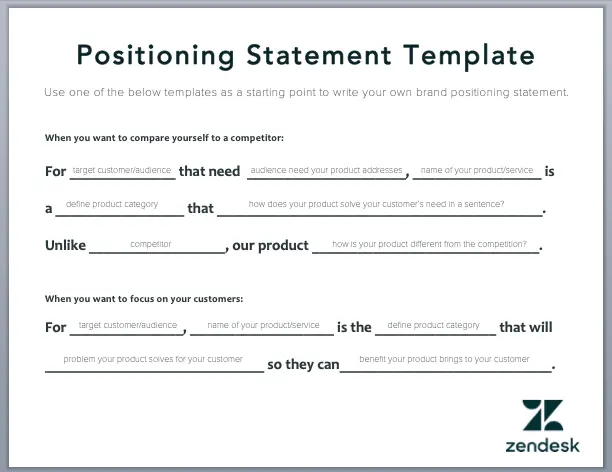Have you reached the stage when your existing markets are saturated and the growth opportunities are limited? If so, dive in to learn 10 core principles of international marketing to take your business global.
Spoiler alert: international marketing is anything but easy. Many companies learn it the hard way failing at international expansion spectacularly.
Luckily, you are not one to embark on a global expansion journey unprepared. And we are here to smooth that journey with our comprehensive international marketing guide.
Pro tip: Before making a foray into overseas markets, make your website, product, and marketing content available in local languages. When done right, localization can determine the success or the failure of your marketing efforts. Go here to learn about effective localization management.
What are the 10 core principles of international marketing?
Every successful international marketing strategy is built on the following 10 principles.
#1 - People - understand new customer behavior
Designing your global marketing strategy always starts with people.
To successfully market your product, understand the needs and habits of your target customers. Without this, you won't be able to successfully plan any other aspect of your marketing campaign.
#2 - Product - satisfy the new needs
Once you get a solid understanding of what your target customers need, figure out how your product fits into the puzzle.
Is there any demand for your product? If there isn't one, it will be very difficult and expensive to create it. Is it worth it? Do your numbers and if they don't stack up, simply look elsewhere.
If you have, a number of products in your portfolio, pick the one that satisfies user needs the best. If you're in the confectionery business, entering the Swiss market with chocolate may be tough, but other kinds of candy may fare better.
Even if there's demand for your product, you may need to adjust it to local needs. For example, your rivals may be offering features that you don't. If that's the case, you may need to add them to even stand a chance to get a foothold in the market.
However, don't simply copy the features of your competitors. Instead, look for better ways to address their needs, problems, or desires.
#3 - Pricing - premium or economy?
How much should you charge for your product?
The choice of pricing strategy will highly depend on your current market positioning.
If you have a premium product in one market, you can't simply pitch it to new customers as an economy product in another. You may score a few quick wins, but it's going to damage your brand image in the long run.
If you have an economy product, commanding premium prices won't be easy either. Not overnight anyway. You may be able to gradually elevate its image but it's a long game that requires consistency and coordination across all markets.
In terms of actual prices, these will depend on what your competitors charge, how your product compares to theirs, and what the target users can afford.

Source: Marketing Minds
#4 - Positioning - find your voice
As mentioned, your pricing is determined by your product positioning strategy.
How do you design one?
In short, use your market research, to develop your unique value proposition (UVP).
It should contain answers to these 3 basic questions:
- How does your product satisfy your target user needs?
- What are its benefits for the target customer?
- Why should your prospective customer choose the product over competing ones?

Source: Zendesk
Don't rush the process of defining your product positioning because it's going to drive the rest of your marketing efforts.
#5 - Promotion - choose the right strategies for new markets
When introducing a new product or service to a new market, make sure that your prospective customers actually know about it. Unless you have a lot of cash to burn, put some serious thought into choosing the right marketing channels.
In short, the choice will depend on your target audience, product, and local market requirements.
For example, Facebook advertising won't be very effective in China. Email marketing may not work if your target users rely on instant messaging for communication. Celebrity endorsements that work great in Japan or Korea, won't be of much use in the States.

Source: Marketing Minds
#6 - Place - find the right sales channel
Now that you've figured out how to promote your product best, it's time to find the right sales channels. For SaaS products, that's not really relevant but for any other sector, that's something that can make or break your international marketing efforts.
Basically, make sure that your customers can buy your product quickly. To choose the right place to sell it, find out about the shopping habits of your customers.
Do they prefer shopping online or in person? If it's the latter, you will have to prioritize brick-and-mortar stores. their location will be key to their success. For example, retail stores on the city outskirts may work better for some products in different target markets.
#7 - Physical environment - get the right vibe
When fitting out your brick-and-mortar stores, make sure to create the right atmosphere. This is the right chance to create the right impression on the user and make them feel about your brand in a particular way.
What do you need to consider when designing the physical environment?
- Size - a big store may be overwhelming and impersonal. For a more intimate experience, consider a smaller venue.
- Spacial layout - different layouts create different customer emotions. For example, free-flow layouts can confuse some customers, while actually preventing them from bumping into each other.
- Ambiance - use music, colors, and lighting to create the right mood. Make it consistent with the branding and use it to communicate your values. For example, Apple stores follow the same minimalist design principles as their products.

Source: ArchDaily
#8 - Packaging - make it look the part
Product packaging is the next element of your international marketing campaign.
Start with the packaging design. Make necessary adjustments based on what your target customers are used to or the local conditions. For example, Coca-Cola cans in Saudi Arabia come with a protective lid.

Source: Reddit
Choosing the color of your packaging comes next. Whether you're designing physical packaging or a landing page, do your homework, as colors have different significance in different cultures.
Let's take green as an example. In Western cultures, green is associated with the environment, progress, sustainability, and luck. In China and Indonesia, however, it indicates infidelity. And in South America, it's the color of death!
Then, there's the packaging copy. Make sure to translate it accurately because mistakes can be costly as some of the biggest companies have learned the hard way.
Labels are another important part. Apart from making them visually appealing, make sure they comply with local laws and regulations. For example, food packaging in Europe needs to provide the nutritional value of the products. If so, make sure you use local units.
#9 - Local teams - leverage their expertise
Building a local team is the quickest way to accelerate your marketing campaign.
No matter how skillful and experienced your marketing manager is, they won't be a match for professionals with local knowledge. Local experts have a better understanding of customer needs, competitive landscape, or cultural nuances, which makes them an incredibly helpful resource.
A local marketing manager may also bring the talent that your company desperately needs. Thus, hiring them could be more cost-effective than recruiting at home and covering the ex-pat costs.
When you make the effort to hire a local team, let them do the job. Ignoring their input defeats the purpose.
#10 - Understanding - make a positive impact
Hiring the local workforce is also a way to make a positive impact on the local communities.
Companies often neglect this aspect of international marketing in favor of quick short-term benefits like increased sales. In Viking-style raids, they move in with aggressive marketing and sales, often undercutting local companies, and run away as soon as the sales start to drop.
What such companies fail to understand is that their long-term success depends on the long-term prosperity of the local communities.
What can you do to promote the growth of strong and sustainable communities?
- hire and develop local talent
- pay local taxes
- invest in local infrastructure
- develop environmentally-friendly solutions
Challenges of International Marketing
When applying the principles of international marketing to your global expansion strategy, you're likely to face a number of barriers that could potentially derail your efforts.
What are they?
The most common challenges of international marketing include:
- Lack of knowledge - companies may lack knowledge of the foreign market they are entering, which can lead to poor decision-making.
- Cultural differences - understanding and adapting to the cultural norms and values of a foreign market is crucial for success in international marketing. Failure to do so can lead to cultural tension or even offense.
- Language barriers - communicating effectively with a foreign market requires a solid understanding of the language, cultural idioms, and colloquialisms.
- Legal and regulatory differences - each country has its own set of laws and regulations you must adhere to, which can be difficult to navigate..
- Economic and political instability - political and economic instability in a foreign market can make it difficult to plan and execute marketing strategies.
- Competition - the level of competition in a foreign market can be much greater than in domestic markets, making it more challenging to enter and succeed.
- Logistics - additional logistics, such as shipping and customs, can be complex and costly.
- Differentiation - differentiating the company and its product from local competitors can be difficult and research intensive.
Examples of Successful International Marketing
Now that you know the principles of international and global markets, let's look at a few examples of how companies nail it in the global marketing arena.
Spotify
Spotify has managed to gain global exposure for the product and artists by redefining music genres.
Apart from traditional genres, like rock, hip-hop, or classical, it allows users to search music by mood. It allows listeners to discover music that they would have never come across otherwise. That's because people all over the world share similar emotions or lifestyles.
McDonald's
The fast food chain is an excellent example of product localization.
The company adapts its menus to the tastes of customers in the local markets. That's why in the Middle East, you can find Chicken McArabia, while Indian restaurants don't serve any pork or beef as eating them is a religious taboo.

Source: McDonald's
Rezdy
Rezdy is a reservation software system that makes the booking system a breeze. While the company primarily targets Australian, UK, and US businesses, its customers come from all over the world.
To accommodate customer needs, Rezdy offers hundreds of customization options. You can display the content in a different language, switch the currency, and automatically change the timezone to ensure a seamless experience for global users.
A perfect example of a SaaS product internationalization and localization done well!
Parting Thoughts
International marketing is a challenging beast to tame. Fortunately, by understanding and applying the principles of international marketing outlined in this blog post, you can develop a solid marketing strategy.
Too much to chew?
Seek out local partners and experts who can help you navigate the nuances of a new market and develop a marketing strategy. Then, use professional localization services and tools to execute it.
Get the week's best content!
By subscribing, you are agreeing to have your personal information managed in accordance with the terms of Centus Privacy Policy ->
Keep learning
12 min. read
Building an Effective International Expansion Strategy
6 min. read
Internationalization and Globalization: What’s the Difference Between?
13 min. read
Best Internal Growth Examples + 8 Expert Strategies
7 min. read
What is Global Localization: Principles & Strategy

13 min. read
Building a Multidomestic Strategy with Examples
11 min. read